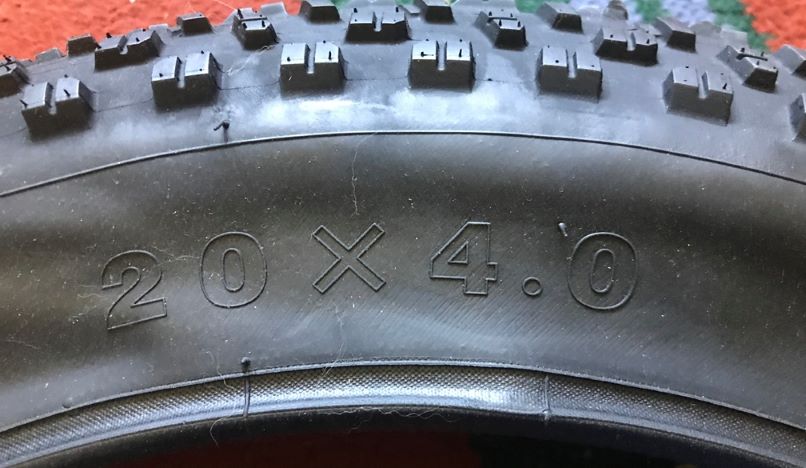All things considered, electric bike batteries are the heart and soul of your e-bike. They come in different forms, like lithium-ion types, popular for their lightweight, high energy density and sustainability. Yet, ensuring the battery matches the bike’s electronics and connectors is equally crucial. A surprising fact is that these batteries live for about 500 to 1000 charge cycles — longevity achieved through proper usage that includes correct charging, maintaining moderate temperatures, and regular cleaning. Taking the first step into e-biking? Begin by understanding your battery.
To extend the lifespan of your electric bike battery, it is crucial to follow proper charging practices, avoid overcharging, store the battery at moderate temperatures, and regularly maintain and clean it. Additionally, varying pedal-assist settings, contributing to your own pedalling effort, and avoiding extreme weather conditions can help maximise the performance and longevity of your e-bike battery.
If you wish to learn more about bikes that use batteries you can here.
Electric Bike Battery Technology Introduction
Stepping into the world of e-bikes, you’ll soon find yourself drowning in a sea of Vs. Not villains or v-necks, mind you, but volts! As a newbie, you’ll encounter mysterious numbers like 36v, 48v, and even the mighty 52v. Just so we’re clear, ‘V’ stands for volts, not vengeful vendettas.
Higher voltage? More power! It’s like upgrading from a whisper to a shout. A 36v battery might gently push your bike along, but a 52v will make it sprint like it’s late for a date. More volts mean more range, which is fabulous because who doesn’t want to keep pedalling away from their problems? But, remember, with great power comes great… charging times. Yep, the more volts you pack, the longer you’ll be twiddling your thumbs waiting for the battery to juice up.
Now, electric bike batteries aren’t just any batteries they’re the unsung heroes powering your two-wheeled lightning bolt. Understanding these marvels of electricity is crucial, which is why we’ve cobbled together an ‘Electric Bike Batteries FAQ.’ It’s like a treasure map, but instead of leading you to gold, it leads to enlightenment about your bike’s powerhouse. So, dive in, and let’s demystify those electrifying questions you’ve got!

How much does an average e-bike battery cost?
The cost of an electric bike battery can vary greatly depending on its type and capacity lithium-ion batteries can cost upwards of £400. However, it should be noted that even with the higher up-front cost, lithium-ion batteries have a longer lifespan and come with different features such as lighter weight and a smaller size that may make them more suitable for certain applications.
What type of battery is best for my e-bike?
This will ultimately depend on personal preferences and intended uses. Generally speaking, basic lead acid batteries are more suitable for casual riders who don’t plan to ride far distances or over long periods of time. On the other hand, lithium-ion batteries offer increased range and higher speeds but at a higher cost.
Are electrical bicycle batteries safe?
Yes, modern electric bike batteries are manufactured with safety mechanisms in place to prevent overheating or damage from overcharging. Additionally, there are several additional safety measures riders should take when using their electric bikes, such as following charging instructions and avoiding direct contact with water and other liquids.
The ones you see in the news are often from self-built e-bikes, which use cheaper batteries. However, you should always be aware when you are charging your batter and not leave it unattended, or put it somewhere on a wooden surface somewhere it’s less likely to cause a fire if a malfunction does happen.
Now that you know the answers to some of the most common Electric Bike Batteries FAQs, it’s time to consider how long a lithium-ion battery will last before needing replacement. In the next section, we’ll cover all aspects of this topic so you can better understand your options when selecting a battery for your electric bike.
How Long Does A Lithium Ion Battery Last?
The longevity of a lithium-ion battery varies depending on how often it is used and how well it is cared for. Generally, batteries will last between 500-1000 full-discharge cycles. Some basic care tips include preventing excessive heat exposure, avoiding complete discharge, and not overcharging the battery. That being said, some lithium-ion batteries can last even longer with up to 2000 full-discharge cycles possible. On the other hand, cheap or off-brand batteries tend to have shorter lifespans of only 300-500 full-discharge cycles.
When it comes to the performance of a battery over time, gradual capacity loss is inevitable due to natural wear and tear. Depending on the type and quality of the battery, this capacity can degrade anywhere from 10 to 30 per cent within the first year. After that, performance slowly continues to decline until the battery is retired.
It’s important to note that no matter the brand or type of battery, its lifespan can be greatly extended with proper maintenance and use. Taking simple steps like periodically checking your wiring connections can help prevent any unexpected power losses. More importantly, a regular cleaning with a soft brush or cloth can minimize damage caused by dust deposits, which can also short-circuit or drain your battery over time.
No matter how you decide to care for your battery, it’s still important to be mindful of its estimated lifespan as stated on its packaging label. Typically made available by manufacturer’s websites, these estimated lifespans can help you plan ahead when replacing older batteries down the road — essentially helping you avoid any unexpected outages due to ageing components.
To conclude, it’s impossible to know exactly how long a lithium-ion battery will last without testing it first, but with proper use and maintenance, it can easily reach 500 – 2000 full-discharge cycles in some cases — far surpassing expectations in terms of usage longevity.
Now that we’ve explored Lithium Ion Battery life spans, let’s move on to the next section: “What is the Average Charge Time For A Battery?”
What is the Average Charge Time for a Battery?
Charge time is a major factor to consider when purchasing an electric bike and the battery that powers it. When fully depleted of its energy, how long it will take to restore the battery to full capacity and be ready for another ride is an important component of understanding how your bike and battery work together. On average, most electric bike batteries take about four to eight hours to charge from empty, but this can vary depending on several factors such as battery size, type of charger being used, and age of the battery.
Typically, a lithium-ion battery with a 3-amp charger will recharge in about four hours. However, using a 2-amp charger typically takes about five to eight hours for a full charge. Keep in mind that the more Amp hours (Ah) a battery has, the longer it will take to charge due to its greater capacity. Also, as batteries become older they may take longer to recharge back up to full capacity. Charging times may also be affected by weather conditions and discharging levels prior to charging.
In addition to considerations regarding the time taken to recharge the battery, you should also consider the number of recharges the battery can handle over time before it begins to lose significant capacity or may even need replacing altogether. This is referred to as ‘cycling depth’ and should be an important deciding factor when choosing an appropriate electric bike battery.
Now that we understand what determines the average charge time for a battery, let’s explore how performance can be impacted by this in our next section – Battery Performance.
- According to an independent study conducted in 2020, the average life span of an e-bike battery ranges from 500-800 charge cycles or 2-3 years.
- A deeper cycle LiFePO4 lithium battery can last up to 2000 cycles depending on use and storage conditions.
- On average, the range per charge for an e-bike battery is between 20-50 miles when ridden on flat terrain.
Battery Performance
Battery performance is paramount to the cycling experience and is an important factor when considering an e-bike. Planning long rides can involve the evaluation of how much battery range is available with a given battery. There are two major components to battery performance – capacity and discharge rate. Battery capacity is measured in watt-hours and indicates how much energy the battery can store. Discharge rate measures how quickly the battery drains and impacts the power delivery of the e-bike motor over time.
The capacity of a battery directly impacts it range. However, discharge rate also plays a key role in the efficiency and rider control. The higher the discharge rating, typically the faster the bike will accelerate up hills. More powerful batteries tend to have lower ranges due to their higher discharge rates but can be more useful for fast acceleration or hill climbing. On the other hand, less powerful batteries may not accelerate as quickly but tend to last longer because they consume less energy over time.
In conclusion, understanding your usage needs will help you determine which type of battery is best for your needs – powerful discharge rates for fast acceleration; or low-powered batteries with long-lasting range. The next section dives into how many miles you can expect on one charge from each type of battery available.
How Much Range Can I Expect from a Battery?
When it comes to choosing an electric bike, one of the biggest factors in your decision will be range. How far can you ride on one charge? Most e-bike batteries have a range of anywhere from 40 miles to 100 miles, depending on the power of the battery and the weight of the rider and cargo. Generally speaking, high-voltage batteries offer more range than low-voltage ones.
The exact range you get out of an e-bike battery will depend heavily on how you use it. If you’re riding long distances at high speeds, that range will decrease significantly, while shorter trips at lower speeds can help increase your range. Moreover, if your bike is carrying extra weight in terms of cargo or passengers, that can also reduce the range considerably. Additionally, the terrain you ride on and weather conditions such as wind and rain can also reduce battery life significantly.
Most e-bike manufacturers give estimates for their battery ranges, but these figures should always be taken with a grain of salt – the actual battery range may be more or less depending on various external factors. The best way to find out is to ask a knowledgeable salesperson or bike expert for an accurate estimate, taking into account your expected use and possible environmental conditions.
At the end of the day, it’s important to remember that the range of an e-bike is an ever-changing figure – something that varies from rider to rider even with similar models and conditions. But with a little bit of research and knowledge, you should have everything you need to find an EV bike with a suitable range for your needs.
You can find out more about how to calculate the range of your bike here.
Now, let’s move on to our next topic – The maintenance of Electric Bike Batteries.
Lifespan and Maintenance of an EBike Battery
Taking good care of your electric bike’s battery is like caring for a good friend you want to treat them well so they stick around for a long time. Electric bike batteries are like the heart of the bike, providing the power it needs to move and function. So, what exactly does it take to maximise their lifespan? Let’s explore a few key strategies.
First, think about how often you recharge your phone. Constantly charging it, using it until its charge drops too low, and frequently overcharging can wear the battery down faster. It’s the same principle with e-bike batteries. Electric bike batteries also have a limited number of charge cycles, typically ranging from 500 to 1000 charge cycles. This means each full discharge and recharge counts as one cycle, and eventually, the battery’s capacity will start to drop.
This deterioration occurs at an average rate of 2-3% per year, whether you use the battery or not. To understand this better, think about how your body changes as you age; similarly, battery ages over time, even if it’s not in use.
So, what can we do to slow this ageing process down and keep our batteries performing well?
Proper charging practices are crucial. Just like our bodies need rest to recover, e-bike batteries require time to relax too. Avoiding full discharges and storing the battery at around 50% charge level when it’s not in use can help maintain its health.
Best Practices for Prolonging Battery Life
| Charging | Storage | Cleaning & Maintenance |
|---|---|---|
| Avoid overcharging | Store at 50% charge when not in use | Regular cleaning & maintenance |
| Charge at room temperature | Store the battery at moderate temperatures. | Proper storage |
It’s comparable to leaving our bikes out in the rain avoiding extreme weather ensuring they’ll be ready for our next ride when we need them. And just like our bikes need regular tune-ups, taking care of our e-bike batteries involves some TLC too.
Now that we’ve explored best practices for extending the lifespan of your electric bike battery, let’s discuss other smarter ways to maintain its condition for optimal performance.
Types of Electric Bicycles Battery Cells
When choosing a battery for an electric bike, there are several types of cells to consider. The most common types of electric bike battery cells are lithium-ion, lead acid, and nickel-metal hydride.
Electric bike batteries are typically lithium-ion batteries, which are lightweight and offer a long lifespan.
Lithium-ion (Li-Ion) is the most popular cell type because it’s lightweight, offers a long life cycle, and is relatively affordable compared to other cell types. Li-Ion batteries also have found success in powering the majority of electric vehicles. However, they require more maintenance than other cells and can be more expensive depending on the charger used.
Lead acid cells are a cost-effective option for electric bike batteries due to their low price point and simple design. Lead acid cells are also relatively safe as they don’t contain hazardous materials like other types of cells. Additionally, they usually come with advanced charging systems that can monitor the cell’s charge level and prevent overcharging or deep discharging which may damage them.
Nickel-metal hydride (NiMH) is a good choice for electric bikes that need to provide high capacity for short bursts of power. The main disadvantage is the higher initial cost when compared to lead acid or lithium-ion batteries. However, many e-bike owners report that NiMH batteries last longer than lithium-ion and lead acid cells when properly maintained.
No matter what type of cell is chosen, all battery packs must meet certain safety standards before they can be sold to consumers. Before making any purchase decisions, it’s important to research each battery cell type to understand its characteristics and how it will work with your specific electric bike setup.
Now that you have a better understanding of the different types of electric bike battery cells available, it is time to consider some of the factors to keep in mind when buying a new battery pack; this will be discussed in the next section.
Investment and Value: Cost of Electric Bike Batteries
Electric bike batteries are the powerhouse of any e-bike, and their cost is a major consideration when investing in an electric bike. The range of prices for these essential components can vary from $500 to $700 for a typical 48V/11Ah battery. However, these prices can fluctuate based on factors like the battery’s capacity, voltage, and brand reputation.
The decision to invest in a high-quality battery is paramount as it directly impacts the performance and lifespan of your e-bike. A quality battery not only ensures better performance but also lasts longer, ultimately increasing the overall value for money. While the initial investment may seem hefty, it often pays off in terms of longevity and efficiency.
When considering the cost of electric bike batteries, it’s crucial to assess the long-term benefits. Investing in a high-quality battery can contribute to greater efficiency and reliability. It’s similar to investing in durable furniture or appliances – paying more upfront for superior quality often results in better longevity and performance over time.
An analogy might be helpful here: Think of it as choosing between a generic mobile phone charger and one from a reputable brand. While the generic option may cost less initially, it might not last as long or charge your phone as efficiently. Conversely, the charger from a reputable brand may have a higher price tag but offers better quality and durability, resulting in a longer lifespan and better overall value. Similarly, opting for a high-quality electric bike battery may involve a higher upfront cost but offers improved performance and longevity, ultimately providing greater value in the long run.
Ultimately, when evaluating the cost of electric bike batteries, it’s important to consider them as a long-term investment rather than just an immediate expense. Choosing a high-quality battery can significantly enhance the overall riding experience, ensuring that your e-bike remains reliable and efficient for many years to come.
As you continue your journey into the world of electric bikes, let’s now shift our focus to exploring innovative alternatives to traditional electric bike batteries that are revolutionising the riding experience.
Answers to Frequently Asked Questions with Detailed Explanations
How should an ebike Battery be charged and stored?
Electric bike batteries should be charged and stored in a cool, dry place as recommended by the manufacturer. You can store them in a garage or shed during the warmer months, but you will need to bring them indoors in the winter months. It’s best to charge your battery only when it reaches around 25% capacity and charge it up to around 85%. This will help keep your battery healthy and ensure it lasts longer. When storing your battery, make sure that it is in an area that doesn’t exceed the temperature of 40 degrees Celsius (104 degrees Fahrenheit). Additionally, never overcharge an electric bike battery; this can cause irreversible damage to the lithium-ion cells within the battery. Finally, always check the voltage and amps of the charger before use, as improper charging can cause overheating of the battery and even reduce its life cycle.
How long do ebike batteries last?
The answer to how long electric bike batteries last depends on a variety of factors, such as the type of battery, how it’s maintained, and how it’s used. Generally speaking, electric bike batteries can last anywhere from two to five years with proper care and use. Lithium-ion batteries are typically considered more reliable than lead-acid batteries, though both types require regular maintenance in order to keep them in good condition. It is important to carefully read the instructions for charging and storing the battery in order to extend its lifespan. Additionally, riding habits can significantly impact a battery’s lifetime; for example, hills can reduce range and put an additional strain on the power system. With these points in mind, it should be possible for an electric bike battery to serve you well for several years with proper care.
What should I do if my electric bicycle battery stops holding a charge?
If your electric bike battery stops holding a charge, the first step is to check if it’s still under warranty and contact the manufacturer for a replacement. However, if your battery is out of warranty, or you prefer to fix it yourself, there are a few things you can try. Start by fully draining and recharging the battery a few times to recalibrate its charging system. If that doesn’t work, consider replacing individual battery cells or consulting a professional repair service. Remember, proper maintenance and regular charging cycles can significantly extend the lifespan of your electric bike battery. According to industry data, on average, electric bike batteries can last between 3 and 5 years with proper care and usage.
What are the environmental challenges associated with the disposal of electric-bike Lithium batteries
Yes, waste is indeed a significant concern with e-bike batteries. While e-bikes themselves are more eco-friendly than gasoline vehicles, the batteries pose environmental challenges due to their chemical components and disposal issues. Proper recycling and disposal of lithium-ion batteries are crucial to minimize their environmental impact.
I'm the passionate mind behind this online web shop. As an avid cyclist, I have a particular fondness for electric bikes and scooters, believing they offer a unique sense of freedom and joy. Not only do I enjoy riding them, but I also take pride in reviewing and sharing my insights about these fantastic machines. Additionally, as someone who suffers from dry eyes, I'm committed to stocking products that genuinely enhance and improve people's lives. Dive into my shop, and you'll find a curated selection of e-bikes, scooters, and other life-enhancing products that I stand by.






